1

 Re keying a pocket cover to your ignition Key Fri Aug 31, 2018 5:49 pm
Re keying a pocket cover to your ignition Key Fri Aug 31, 2018 5:49 pm
88
Life time member

This "How to" guide is for pocket covers
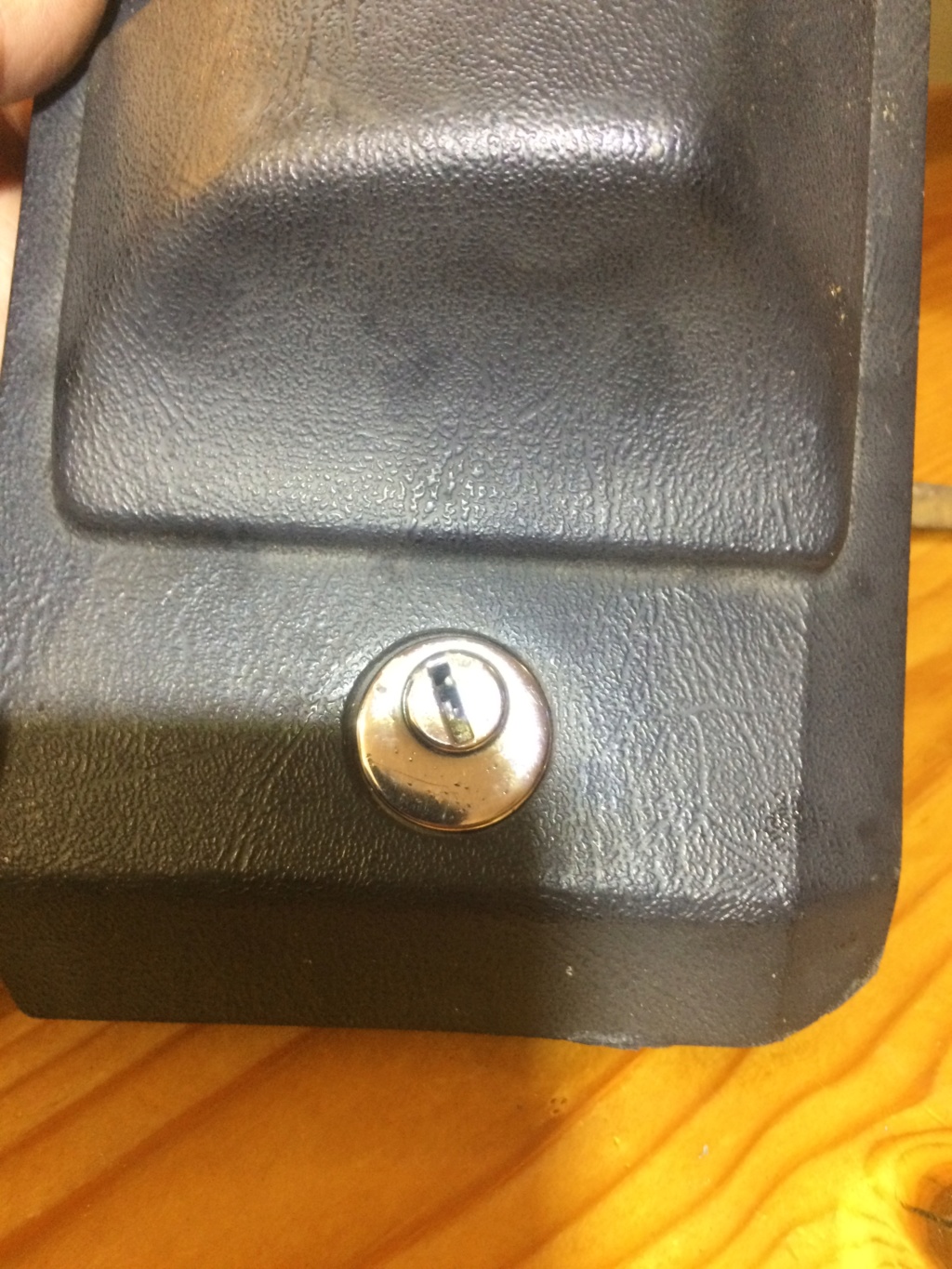
but the principle of how the barrel works is the same for pannier locks albeit that those barrels use flat tangs instead of round pins.
Step 1:
Remove the lock retaining ring.....
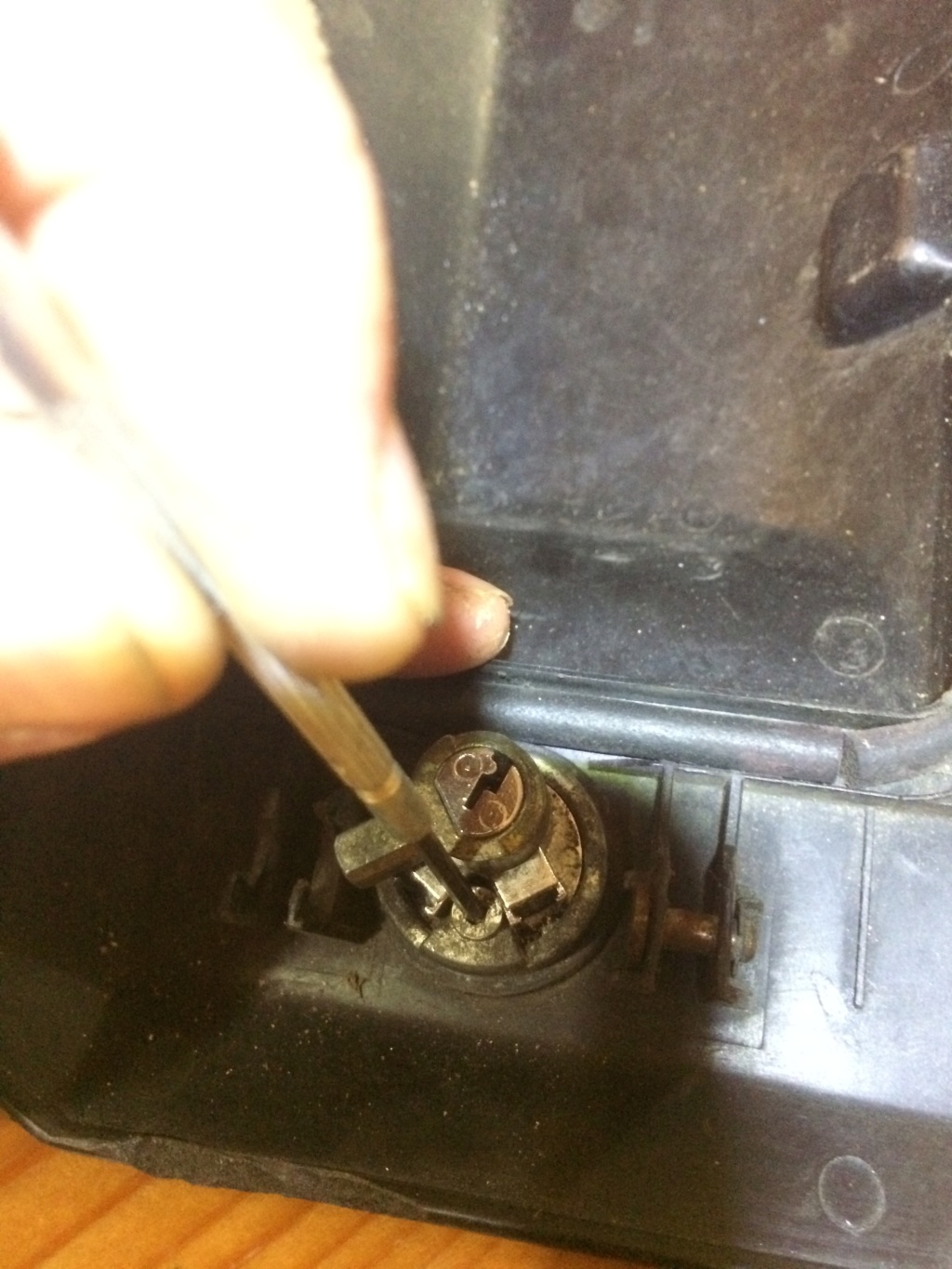
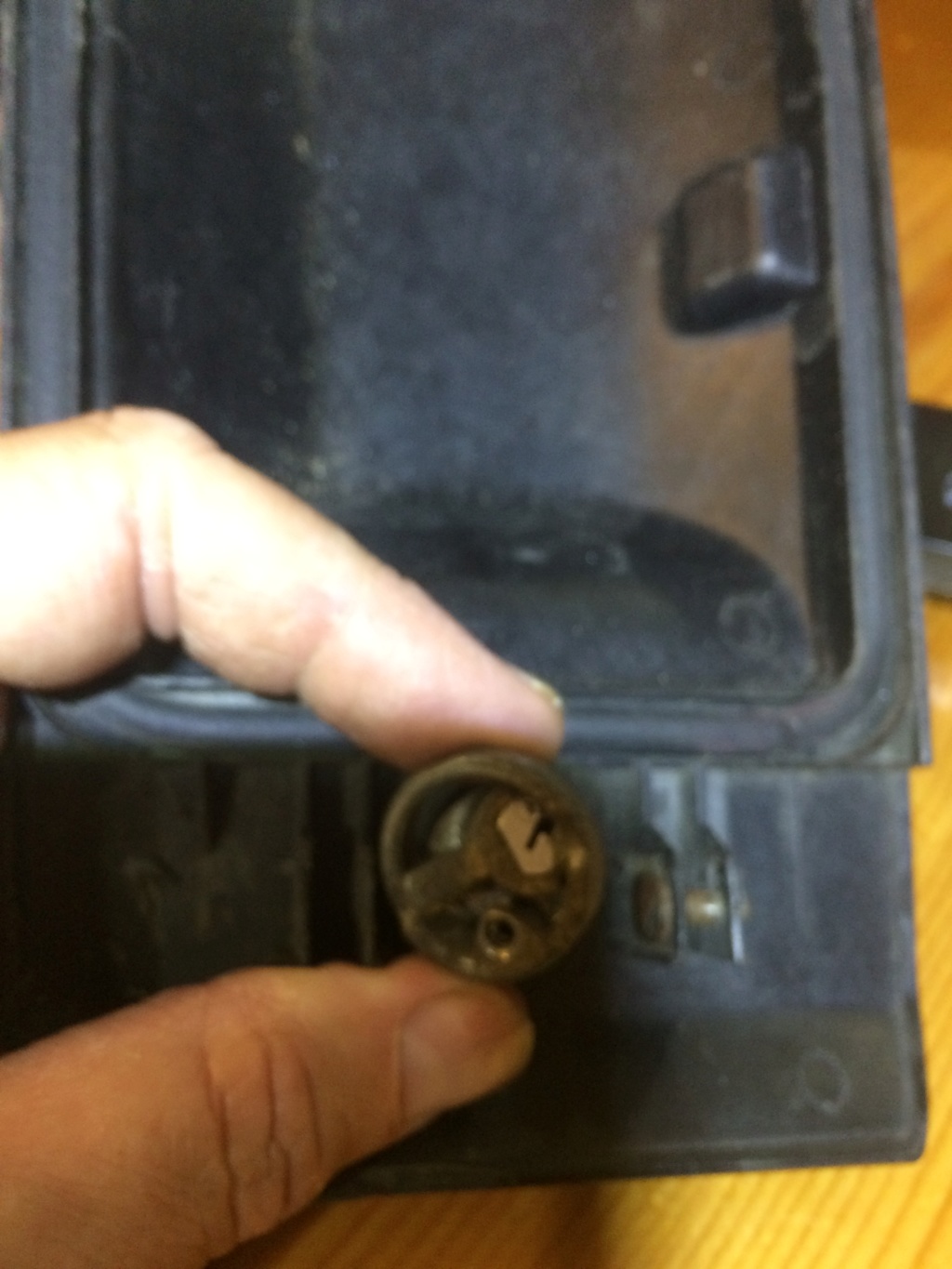
How they work:
The Key pushes pins in the barrel of the lock up into columns inside the housing. An opposing set of pins is pushed by tiny springs to resist them.
Once the meeting faces of the two sets of pins is aligned with the meeting faces of the housing and barrel the barrel can rotate with the key.
A second set of columns in the housing provides the "open" position and allows the key to be withdrawn at this position.
Step 2:
The pins that need to be adjusted are behind these plates....

Use a sharp punch to tap them forward far enough to get a grip with pliers then keep your thumb over it so the tiny springs don't fly as you ease the plate out:

Step 3 ....drill out the roll pin retaining the tongue: (1.5 mm drill bit)

Remove the barrel:
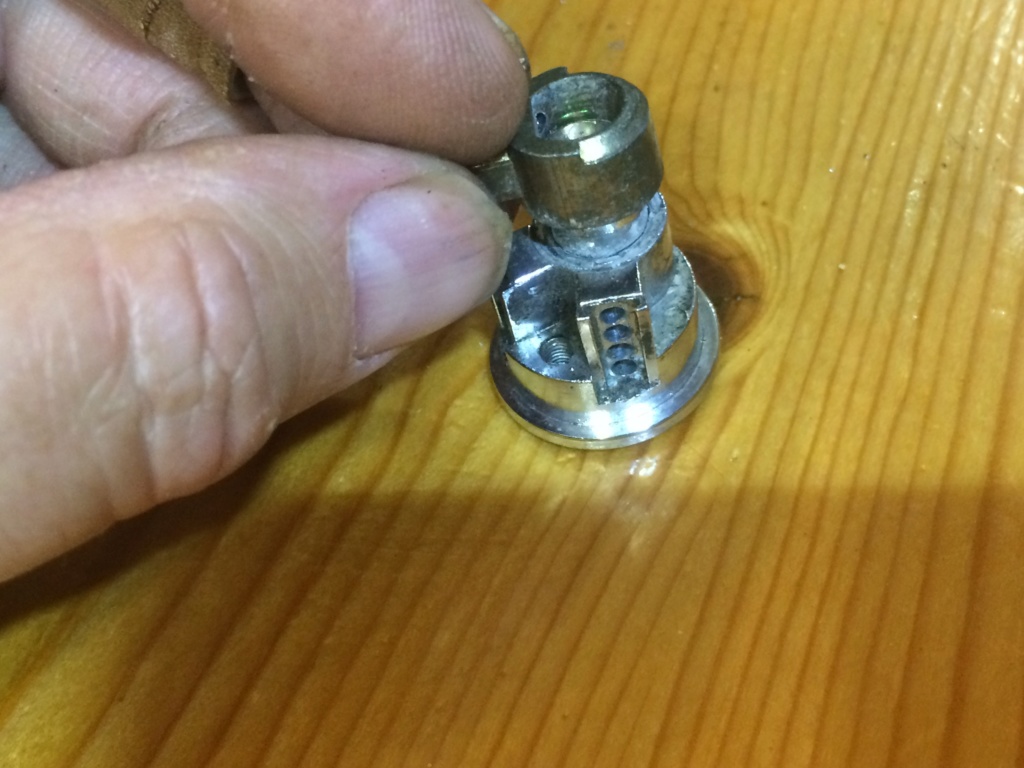
the internals look like this: ( Key is for scale)
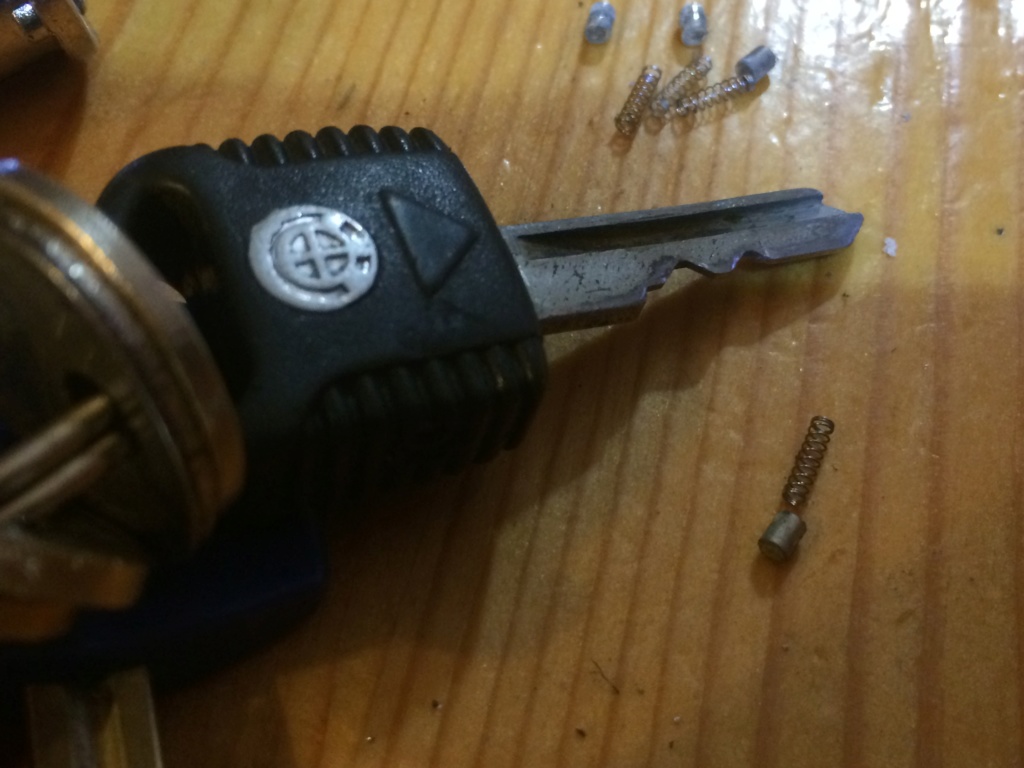
With the barrel out push the key you want to use in and observe which pins are proud:
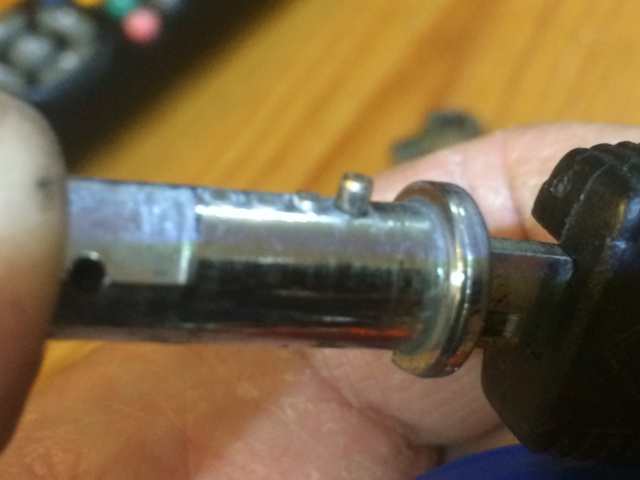
Note, in case they fall out, the pins in the barrel are pointed on the key side and flat on the side photographed. The flat face mates to the short pins pictured above.
The next step is to simply cut and/or file the pins (they are brass so soft enough) flush with the barrel. Any protrusion will stop the barrel from rotating in the housing.
Once you are satisfied the pins match the key, reassembly can begin.
Insert the small square pins first followed by the spring for each of the 4 key points:
( I find the best way to handle the springs is with a small jeweller's screwdriver inserted between coils.
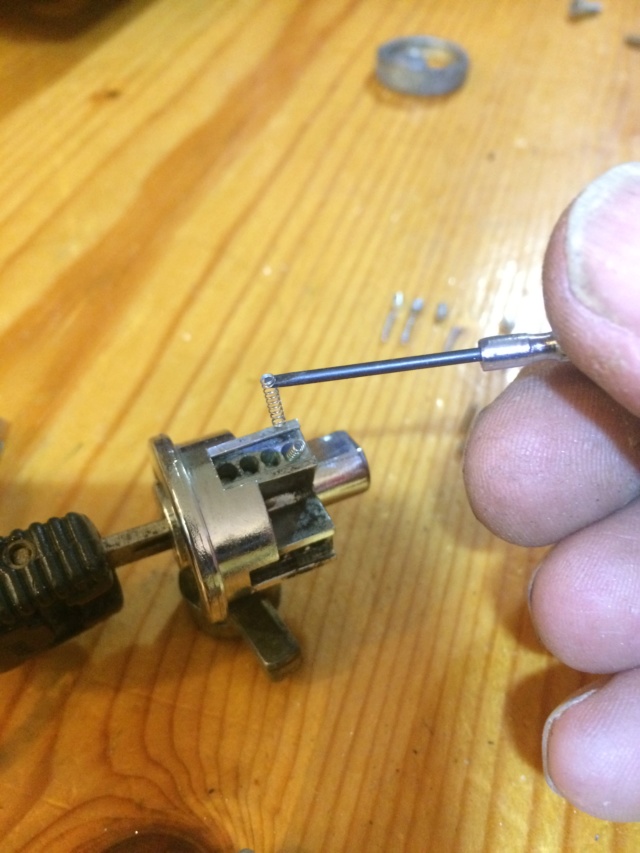
Reinsert the plate, holding each spring down in turn until they are all properly home:
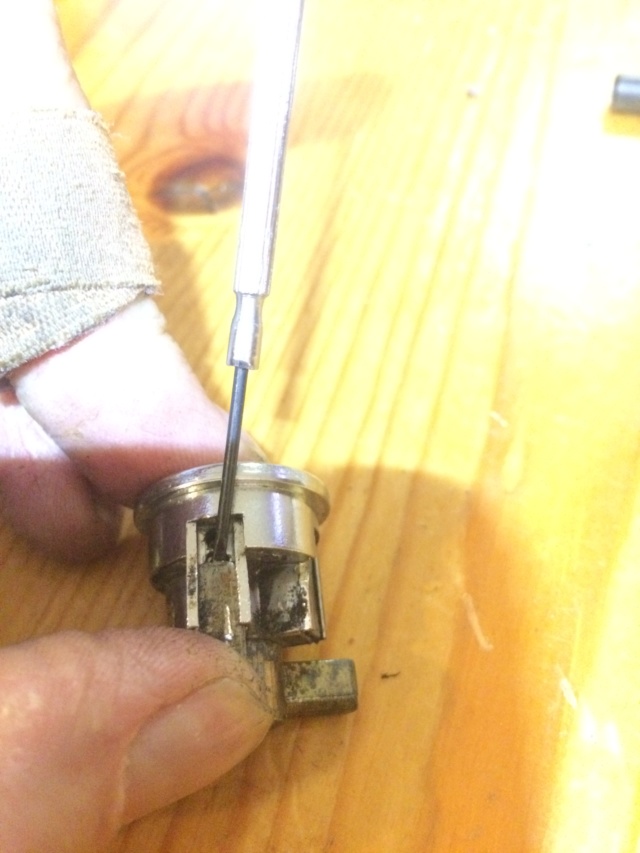
Reassembly of the rest is a straightforward matter. The roll pin may be reused if you were lucky with the drill otherwise a suitable small screw will replace it.
Test it vigorously at this stage and you my have to have a second go at filing the pins.
Once your are happy you can refit the lock and retaining ring

but the principle of how the barrel works is the same for pannier locks albeit that those barrels use flat tangs instead of round pins.
Step 1:
Remove the lock retaining ring.....


How they work:
The Key pushes pins in the barrel of the lock up into columns inside the housing. An opposing set of pins is pushed by tiny springs to resist them.
Once the meeting faces of the two sets of pins is aligned with the meeting faces of the housing and barrel the barrel can rotate with the key.
A second set of columns in the housing provides the "open" position and allows the key to be withdrawn at this position.
Step 2:
The pins that need to be adjusted are behind these plates....

Use a sharp punch to tap them forward far enough to get a grip with pliers then keep your thumb over it so the tiny springs don't fly as you ease the plate out:

Step 3 ....drill out the roll pin retaining the tongue: (1.5 mm drill bit)

Remove the barrel:

the internals look like this: ( Key is for scale)

With the barrel out push the key you want to use in and observe which pins are proud:

Note, in case they fall out, the pins in the barrel are pointed on the key side and flat on the side photographed. The flat face mates to the short pins pictured above.
The next step is to simply cut and/or file the pins (they are brass so soft enough) flush with the barrel. Any protrusion will stop the barrel from rotating in the housing.
Once you are satisfied the pins match the key, reassembly can begin.
Insert the small square pins first followed by the spring for each of the 4 key points:
( I find the best way to handle the springs is with a small jeweller's screwdriver inserted between coils.

Reinsert the plate, holding each spring down in turn until they are all properly home:

Reassembly of the rest is a straightforward matter. The roll pin may be reused if you were lucky with the drill otherwise a suitable small screw will replace it.
Test it vigorously at this stage and you my have to have a second go at filing the pins.
Once your are happy you can refit the lock and retaining ring
__________________________________________________
 88....May contain nuts!
88....May contain nuts!
"The world is a book and those who do not travel read only one page." - St. Augustine from 1600 years ago & still true!
K1 - 1989 - AKA Titan (unique K1/K1100RS hybrid by Andreas Esterhammer)
K1100RS - 1995. AKA Rudolf Von Schmurf (in a million bits)
K100RS - 1991 AKA Ronnie. Cafe racer project bike
K75RTP - 1994
K75C - 1991 AKA Jim Beam. In boxes.
K1100LT 1992 - AKA Big Red (gone)
K100LT - 1988 - AKA the Bullion brick. Should never have sold it.














 coincidence I assure you !
coincidence I assure you ! 

 1986 k75, 1985 K100rt,
1986 k75, 1985 K100rt, 
